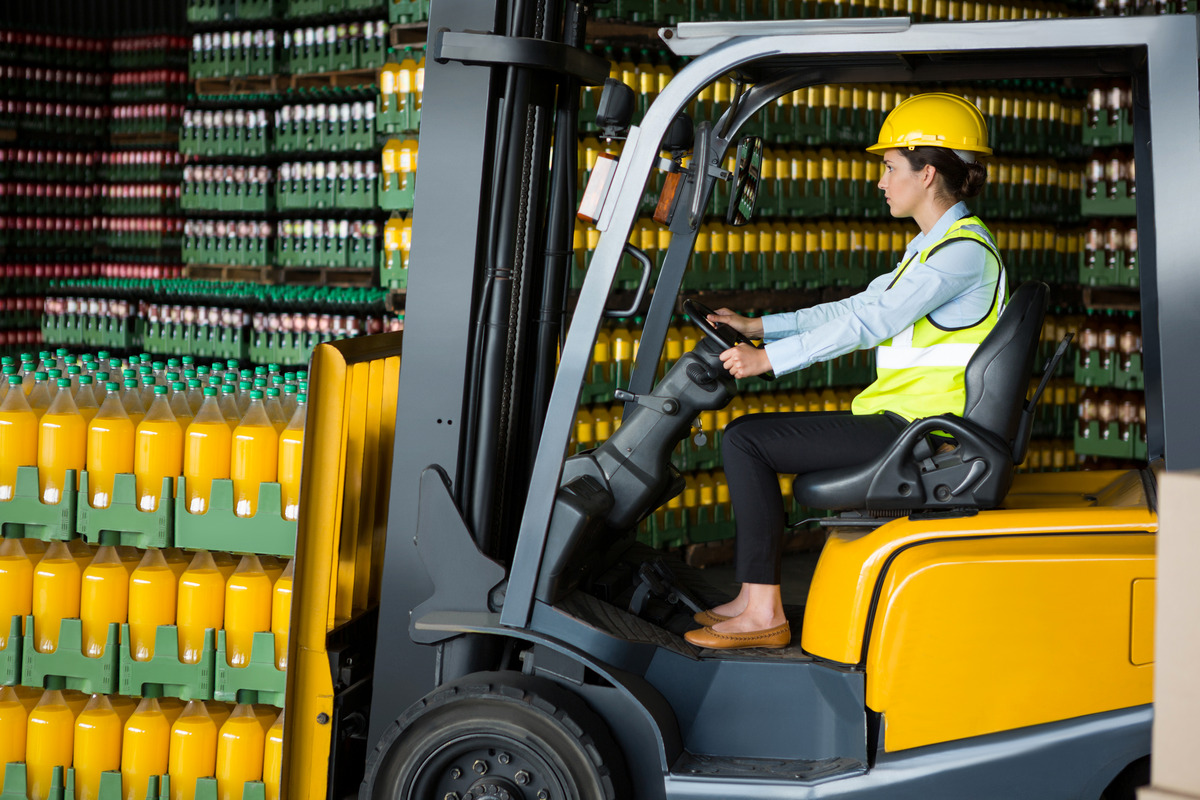Maximizing Warehouse Efficiency: How to Choose the Best Forklift in the Philippines

In the bustling world of logistics and warehousing, efficiency isn’t just an advantage; it’s a necessity. Central to achieving this efficiency within the complex web of operations in the Philippines is the choice of the right forklift. The selection of a forklift in the Philippines impacts not only the smooth flow of goods but also ensures safety and cost-effectiveness in a highly competitive environment. This decision, challenging yet crucial, requires a nuanced understanding of your warehouse needs, the variety of forklifts available, and their specific applications.
Making an informed choice involves more than just matching specifications to requirements. It’s about understanding the subtle balance between performance, cost, and the unique demands of your warehouse operations. As you delve into the nuances of choosing the best forklift for your needs, it becomes clear that this decision is pivotal in transforming warehouse operations from good to great. Whether you’re navigating the narrow aisles of an indoor storage facility or moving bulky items outdoors, the right forklift can dramatically enhance productivity and operational efficiency.
Understanding Your Warehouse Needs
Before diving into the vast pool of forklift options, it’s paramount to comprehend the unique demands of your warehouse. The size and layout of your facility play a critical role in determining the type of forklift that’s most suitable. A compact electric forklift might be ideal for indoor environments with tight aisles, while larger, combustion-engine models could be better suited for spacious outdoor areas. The nature of the materials you intend to move—be it heavy pallets or delicate goods—also influences your choice, dictating the need for specific lift capacities and attachments.
Additionally, consider your operation’s volume and shift patterns. High-volume, round-the-clock operations might benefit from forklifts with longer battery life or quick-refueling capabilities to minimize downtime. In contrast, operations with lighter or infrequent loads could prioritize cost-saving features. Matching the forklift to your specific operational dynamics ensures not just efficiency, but also safety and longevity in performance. Ultimately, a deep understanding of these factors guides you toward making a choice that elevates your warehouse’s productivity and operational harmony.
Types of Forklifts and Their Applications
The selection of forklifts in the Philippines is diverse, catering to various operational needs within different environments. Electric forklifts, known for their quiet operation and lack of emissions, are the go-to choice for indoor use, especially in food processing or pharmaceutical warehousing where cleanliness is paramount. Their eco-friendly nature aligns with global sustainability trends, making them a popular choice for businesses aiming to reduce their carbon footprint.
On the other hand, internal combustion forklifts offer the robustness required for outdoor tasks. Their ability to maneuver on uneven terrain and sustain longer operating times without the need for recharging makes them ideal for construction sites and large-scale outdoor warehouses. These models can handle higher weight capacities, essential for businesses dealing with heavy or bulky items.
For warehouses with specialized needs, such as high-level stacking and space optimization, reach trucks, pallet jacks, and order pickers provide tailored solutions. These specialized forklifts address specific challenges like navigating narrow aisles, reaching high shelves, and picking orders efficiently. By carefully considering the nature of your warehouse operations and the specific tasks at hand, you can select a forklift type that best suits your requirements, enhancing both productivity and safety.
Key Features to Consider
When choosing the most appropriate forklift for your operations in the Philippines, several key features should be weighed carefully. The lift capacity and height are crucial; ensuring the forklift can handle the weight and size of your typical loads and reach the necessary heights is foundational. You’ll need to balance power with the physical constraints of your workspace, potentially prioritizing compact models or those with exceptional lifting abilities.
Maneuverability is another vital aspect, especially in warehouses with tight aisles or complex layouts. Ergonomics plays a role here as well, affecting operator comfort and, consequently, productivity over long shifts. Forklifts designed with user-friendly controls and comfortable seating can significantly reduce operator fatigue.
Safety features cannot be overlooked. Look for forklifts equipped with systems that enhance stability, visibility, and overall security for the operator and surrounding personnel. Likewise, ease of maintenance ensures that your forklift remains operational with minimal downtime. Forklifts that offer straightforward access to parts and require less frequent servicing can lead to long-term savings. By prioritizing these features, you’ll be positioned to select a forklift that not only meets your operational needs but also maximizes efficiency and safety in your workplace.
Cost Considerations
Evaluating the cost of a forklift in the Philippines extends beyond the initial purchase price. It’s essential to consider the total cost of ownership, which includes maintenance, fuel or electricity, and potential downtime costs. Electric forklifts, while generally more expensive upfront, often lead to lower operating costs over time due to their reduced maintenance requirements and the cost-effectiveness of electricity over fuel.
Deciding between buying, leasing, or renting a forklift can also significantly impact your financial planning. Leasing might offer flexibility and lower immediate expenses, ideal for businesses experiencing rapid growth or those with fluctuating demands. On the other hand, purchasing a forklift could be more economical in the long run for operations with stable, high-volume needs.
Fuel type choices—electric, diesel, gasoline, or LPG—each come with their own set of expenses and operational considerations. For example, internal combustion forklifts may incur higher fuel costs, but could be preferred for their performance and durability in tough environments. Carefully analyzing these cost factors will help ensure you make a financially sound decision that aligns with your warehouse’s scalability and operational efficiency goals.
The Importance of Vendor Selection
Choosing the right vendor is as critical as selecting the forklift itself. A reputable vendor can provide not just high-quality equipment but also comprehensive support services, ensuring your forklift operates efficiently throughout its lifespan. Look for vendors known for their reliability and customer service, as they can be invaluable partners in addressing any operational challenges that arise.
A vendor’s ability to offer prompt maintenance and repair services is crucial. Downtime can significantly impact warehouse operations, leading to delays and increased costs. Additionally, the availability of parts plays a significant role in maintenance timelines. A vendor with a well-stocked inventory of parts can help minimize downtime, keeping your operations running smoothly.
Ultimately, the relationship with your vendor should be viewed as a long-term partnership. Selecting a vendor who understands your business’s specific needs can offer tailored advice and support, helping to ensure your forklift selection enhances your warehouse’s efficiency and productivity.
Training and Safety
Ensuring that forklift operators are properly trained is essential for maximizing warehouse efficiency and maintaining a safe working environment. Comprehensive training programs not only cover the basics of operation but also emphasize safety protocols and emergency response techniques. This education helps reduce the risk of accidents, which can lead to injuries, damages, and operational delays.
Moreover, adherence to safety standards and regulations should be a top priority in any warehouse operation. Incorporating regular safety audits and refresher courses can reinforce safe practices and keep them at the forefront of employees’ minds. Investing in training and safety not only protects your workforce but also contributes to the longevity of your equipment.
A well-trained operator can utilize a forklift to its full potential, optimizing workflow and productivity. Thus, dedicating resources to thorough training programs and continuous safety education pays dividends in operational efficiency and a harmonious workplace.
Key Takeaway
Selecting the right forklift in the Philippines is a multifaceted decision that significantly affects warehouse efficiency, safety, and overall operational cost-effectiveness. By thoroughly understanding your warehouse needs, considering the various types of forklifts and their specific applications, and weighing key features against cost considerations, you can make an informed choice. Vendor selection, coupled with an emphasis on training and safety, further ensures that your forklift investment is sound and yields the desired productivity enhancements.
This journey towards optimizing your warehousing operations with the ideal forklift requires careful analysis and strategic planning. However, the payoff in streamlined operations, minimized downtime, and a safe working environment is well worth the effort. As the backbone of efficient warehouse operations, the right forklift can propel your business forward, ensuring you remain competitive in the fast-paced Philippine market.




